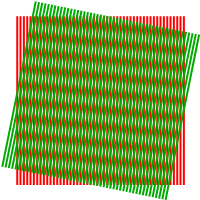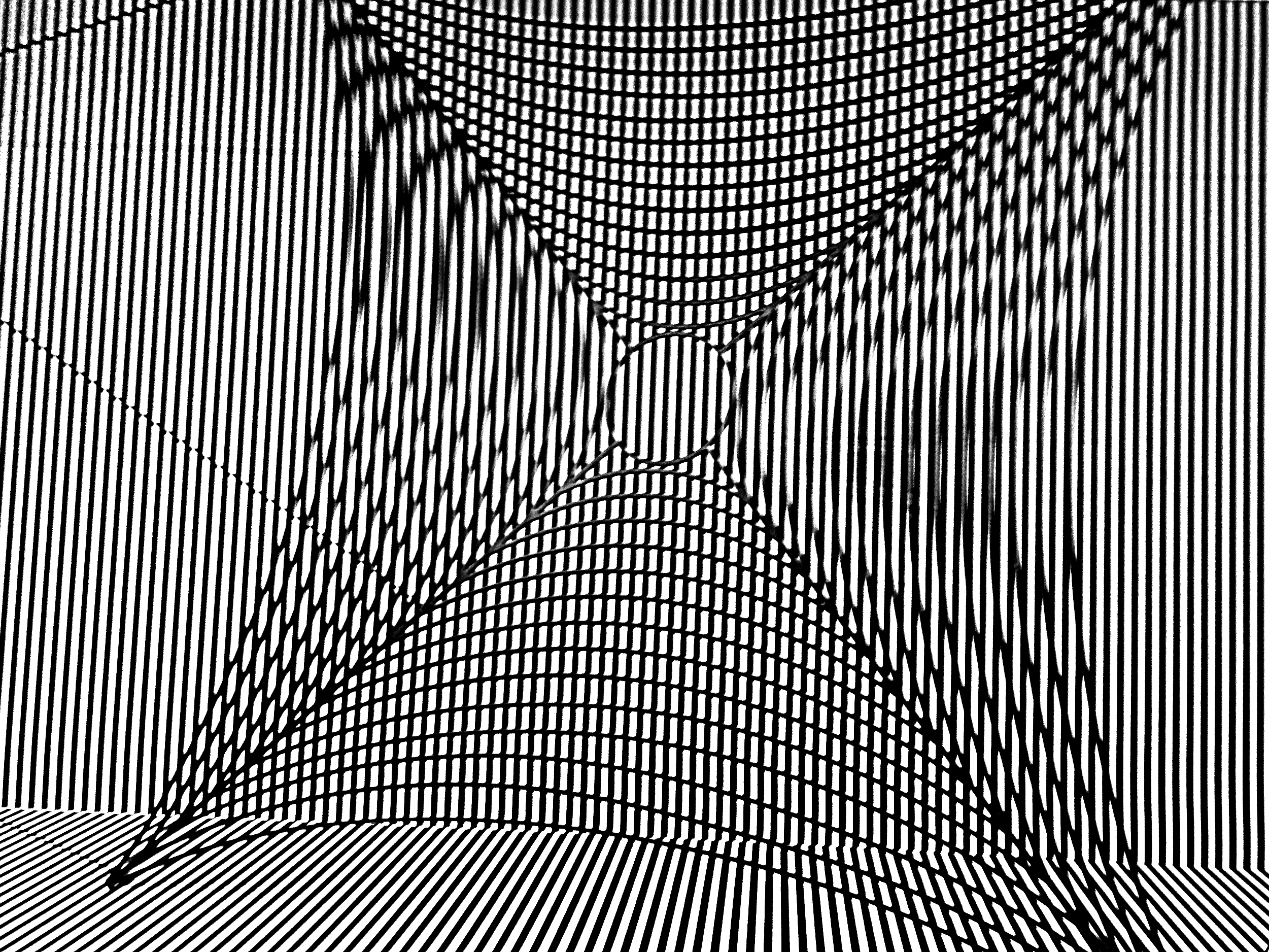Yes, I will admit it, I have been walking the mall again, IPhone in pocket and ever on the prowl for interesting geometrics. Today’s IPhone image is a detail from a Louis Vitton window – how much more geometric can you get. And here I was struck my the wonderful Moiré pattern that I found.
The Moiré pattern is related to the problem of aliasing, where someone makes the mistake of wearing either a striped shirt or striped tie on television, and you see strobing as the stripes cross the pixel pattern on the TV. Another related phenomenon is when two musical instruments are tuned just slightly off frequency from one another, and you hear beats with a frequency that is the difference of the two instruments.

Figure 2 – Animation of the Moiré pattern that forms as a set of green lines is rotated in front of a set of red lines. The spatial frequencies in the horizontal direction change because of the rotation creating the Moiré pattern From the Wikicommons by P. Fraundorf under creative commons license.
Basically if you have a set of lines superimposed on one another, where the lines per inch (referred to in optics as the spatial frequency) of the sets are slightly different from one another, you will see a regular beat pattern, at the difference of the two patterns in lines per inch. You can see the same thing if you rotate two sets of lines even with the same pattern with respect to one another because rotation effectively creates a situation where one set of lines is no separated in the horizontal direction by a shorter distance. You can see this in the little animation of Figure 2.
I have here introduced the very useful optical concept of the spatial frequency. Sound is a wave; so two sound waves can interfere with one another. Light is a wave; so two light ways can interfere with one another. And equivalently any regular line pattern is geometrically equivalent to a wave, a so-called spatial wave; so two regular line patterns can interfere with one another and create Moiré patterns.
Of course, if the line patterns are two dimensional, say a regular mesh like a window screen or a sheer curtain, the beat or interference pattern is also two dimensional. Make the lines curved or three dimensional and very wonderful patterns can occur, like in my photograph.
Sometimes also the pattern can be quite unexpected if the lines or meshes at just discernible. In that case, the Moiré pattern can suddenly appear seemingly out of no where. For instance, when the wind blows a sheer curtain in front of a window screen.

